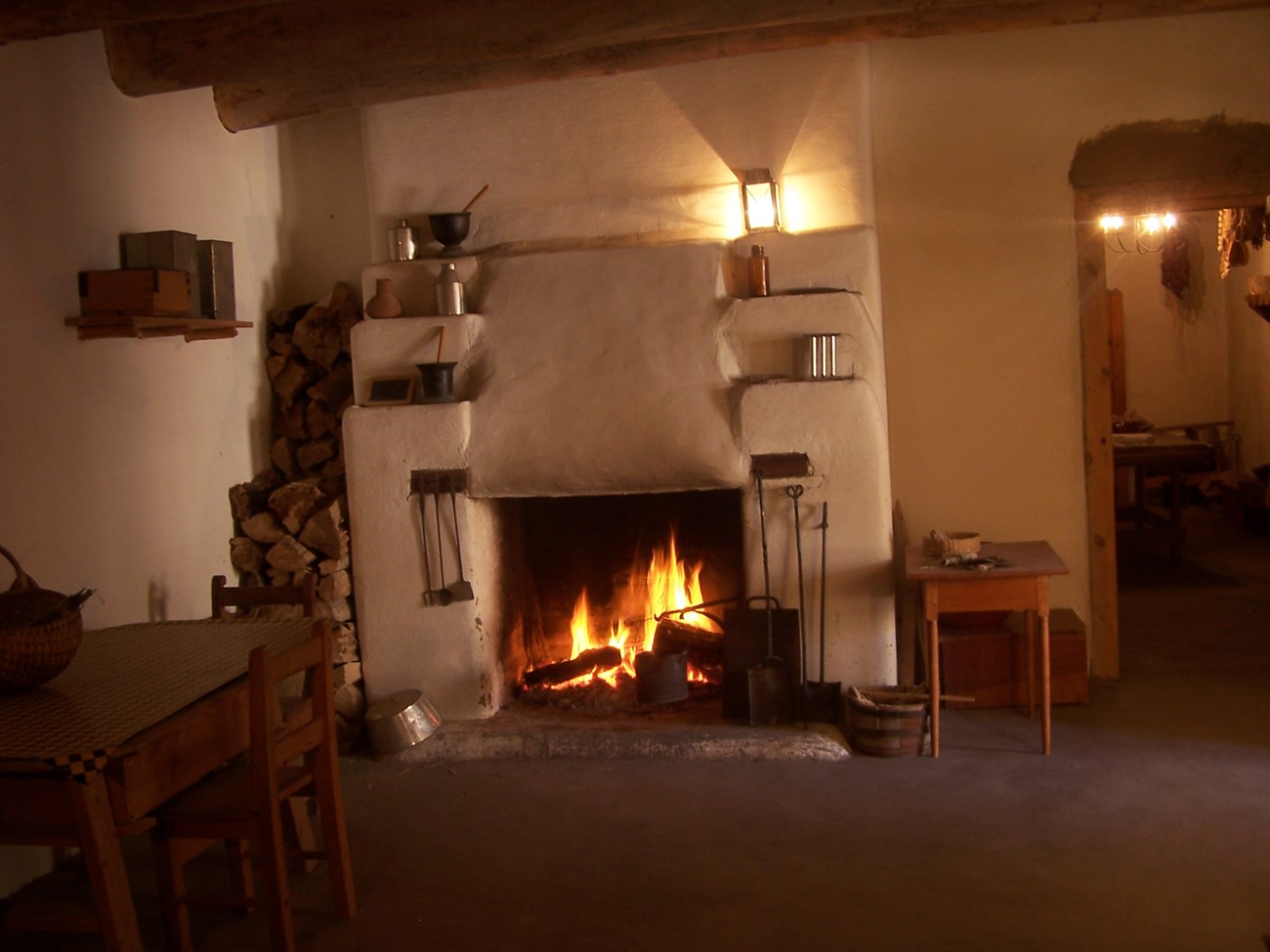Last updated: April 26, 2024
Article
Enslavement in the Southwest Borderlands

NPS Photo
Dick’s wife was Charlotte, and she is mentioned prominently in the accounts of Ruxton and Garrard as the cook at Bent’s Fort, which makes Boggs’s memory of Dick as William Bent’s cook somewhat curious, unless Dick served as cook when accompanying Bent on expeditions away from the fort. Ruxton writes that “Over the culinary department presided of late years a fair lady of color, Charlotte by name, who was, as she loved to say, ‘de onlee lady in de dam Injun country,’ and who moreover was celebrated from Long’s Peak to the Cumbres Espanolas for slap-jacks and pumpkin pies.” Garrard described Charlotte as “the glib-tongued, sable Fort cook” and the “culinary divinity.” Both Charlotte and Dick were set free, according to Garrard, “by the company, for the valor evinced by the latter, Dick, at the Pueblo de Taos.” Garrard encountered them both on the Santa Fe Trail heading east in 1847.
Another enslaved person at the fort, supposed to have been a brother of Dick, was named Andrew. There is no Andrew named in the Silas Bent estate inventory of 1828, although there is “1 Negro boy child about 10 months old,” and it is possible that this could have been Dick’s brother, despite the great age difference between the two. Andrew is mentioned in Bent, St. Vrain & Co. employee Robert Newell’s “memorandum” in the spring of 1837. He was then with other company traders on the South Platte River. Andrew is also found among the traders listed on William Bent’s Indian trading license for 1848, where his name is given as “Andrew (black).” Fred Fleshman, one of Francis Cragin’s informants, identified another possible enslaved person of the Bents, and, interestingly, he remembered him as a cook as well. This individual was “Billy (a mulatto cook of Bill Bent prior to 1869 for 35 yrs.).” And then there is “the large negro blacksmith” mentioned by William Boggs. One wonders if this blacksmith was Dick or Andrew or someone else.
One problem originating with Grinnell (or, possibly, George Bent), is that Dick, Charlotte, and Andrew are given the surname of “Green,” and this surname has been accepted and repeated by countless historians and writers since. However, none of the contemporary accounts provide a surname for these slaves of the Bents. They are mentioned only as Dick, Charlotte and Andrew. And when the formerly enslaved took surnames, they generally took the names of their former masters. Where “Green” came from is a puzzle. Even more puzzling is the fate of these persons. A search of the 1850 census for Missouri failed to turn up Dick, Charlotte, and Andrew, either with the surname of Green or Bent. George Bent believed that the brothers died in St. Louis, but he did not provide a date. Whether or not they had offspring is also unknown. Unfortunately, Dick, Charlotte, and Andrew literally disappear from the historical record.
That enslaved African-Americans toiled on the far reaches of the U.S. in the southwestern borderlands at Bent’s Fort and other places is a subject not fully examined by scholars. Several Santa Fe traders are known to have traveled the Santa Fe Trail with their black servants, and it seems that the Bent’s traveled frequently with their enslaved persons as well. That Dick would risk his life to avenge the death of his dead master, Charles Bent, speaks to the relationship between the Bents and their enslaved persons.
And that relationship, difficult to comprehend in the twenty-first century, may not have been unique. Paul Wilhelm, Duke of Wuerttemberg, visited St. Louis in 1823 and observed that the “negroes of St. Louis are honest, good natured people, thoroughly devoted to their masters. In most of the families they are treated as if they were members of the family. They are attached to the children of their master with a boundless love. In general the negroes are obedient, gentle and sober people.” Wilhelm’s comments are based on his brief visit to the city and pertain to household slaves of a certain class of residents as opposed to, say, slaves toiling on the St. Louis levee. That there were two sides to slavery in St. Louis is clearly revealed in the writings of William Wells Brown, who spent eight years as a slave in that city in the late 1820s and 1830s before escaping to freedom. In 1848, Brown wrote that “no part of our slaveholding country is more noted for the barbarity of its inhabitants than St. Louis.” And Mark Twain, in writing of his childhood days in Hannibal, Missouri, tells us that “if the slaves themselves had an aversion to slavery they were wise and said nothing.”
Content adapted from Mark L. Gardner's 2004 NPS Historic Resource Study: "Bent's Old Fort on the Arkansas."
